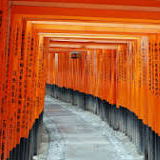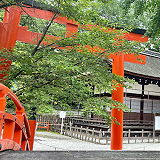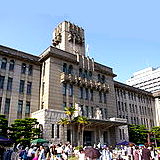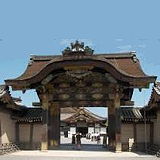
|
Fushimi Inari Taisha 68 Fukakusa Yabunouchicho, Fushimi Ward, Kyoto, 612-0882, Japan ☎ +81 75-641-7331 Last Updated: 09/03/2023 |
| Fushimi Inari Taisha is one of the most famous and iconic Shinto shrines in Kyoto, Japan. It is renowned for its thousands of vibrant red torii gates that create a mesmerizing tunnel-like path through a dense forest. | |
| - Location: Fushimi Inari Taisha is located in the southern part of Kyoto, easily accessible from the city center. It is situated at the base of Mount Inari, one of the city's prominent mountains. - Dedication: The shrine is dedicated to Inari, the Shinto deity of rice, prosperity, and business. Foxes are considered the messengers of Inari, and you'll often find fox statues and imagery throughout the shrine. - Red Torii Gates: The most iconic feature of Fushimi Inari Taisha is its thousands of vermillion (bright red-orange) torii gates that line the paths leading up to the shrine and continue through the forest. Each gate is donated by individuals or businesses as an offering to Inari. - Senbon Torii: "Senbon" means "thousand" in Japanese, and the term "Senbon Torii" is often used to describe the mesmerizing path of torii gates. In reality, there are more than a thousand gates, creating a captivating tunnel-like effect. - Hiking Trails: Beyond the main shrine complex, Fushimi Inari offers a network of hiking trails that lead up the mountain. These trails are lined with additional torii gates, smaller shrines, and beautiful forest scenery. The most popular trail is the hike to the summit, which offers panoramic views of Kyoto. - Fox Statues: Throughout the shrine grounds, you'll encounter statues and figurines of foxes, often depicted with a key in their mouths or other symbols of Inari's domain. Foxes are considered the guardians and messengers of the shrine. - Main Shrine Buildings: The main shrine buildings include the Romon Gate, the Ro-mon Gate, and the Honden - main hall. These structures are beautifully adorned with intricate architectural details and are worth exploring. - Cultural Significance: Fushimi Inari Taisha holds cultural and religious significance in Japan. It is a popular destination for worshippers, tourists, and photographers alike. - Visiting at Sunrise or Sunset: To avoid crowds and experience the torii gates in magical lighting, consider visiting Fushimi Inari Taisha at sunrise or sunset. These times offer a quieter and more serene atmosphere. - Market Street: At the entrance to the shrine, there is a bustling street with numerous shops and stalls selling souvenirs, food, and local delicacies. It's a great place to explore and pick up unique gifts. - Festivals: The shrine hosts various festivals throughout the year, including New Year's celebrations, festivals related to Inari worship, and cultural events. - Accessibility: Fushimi Inari Taisha is easily accessible by train and bus from Kyoto Station and other parts of the city. It's a popular destination, so consider arriving early to avoid large crowds. Fushimi Inari Taisha is not only a place of religious significance but also a stunning and mesmerizing destination that offers a blend of natural beauty, cultural heritage, and unique experiences. | |
Website Wikipedia
Japan » Kyoto
Place » Historical Place

|
Shimogamo Shrine Place » Historical Place One of the oldest Shinto shrines in Japan, Shimogamo Shrine is one of a pair alongside Kamigamo Shrine that was constructed in the sixth and seventh centuries in order to protect against malign influences. The shrine complex is surrounded by the Tadasu no Mori forest that shelters visitors in a world of green and winding streams as well as a small shrine used to pray for beauty. 159 views 💖 2 👍 0Japan, Kyoto, Sakyo Ward, Shimogamo Izumikawacho |

|
Kyoto Place » City Kyoto is the capital city of Kyoto Prefecture in Japan. Kyoto's 2018 population was 1,468,980. It served as Japan's capital and the emperor's residence from 794 until 1868. It is one of the country's ten largest cities with a population of 1.5 million people and a modern face 472 views 💖 1 👍 0Japan |

|
Nijo Castle Place » Historical Place Nijo Castle is a historic and culturally significant castle located in Kyoto, Japan. It is renowned for its architectural beauty, well-preserved Edo-period buildings, beautiful gardens, and its status as a UNESCO World Heritage Site. Nijo Castle was built in 1603 as the Kyoto residence of Tokugawa Ieyasu, the first shogun of the Edo Period (1603-1867). 575 views 💖 6 👍 1541 Nijojocho, Nakagyo Ward, Kyoto, 604-8301, Japan |
